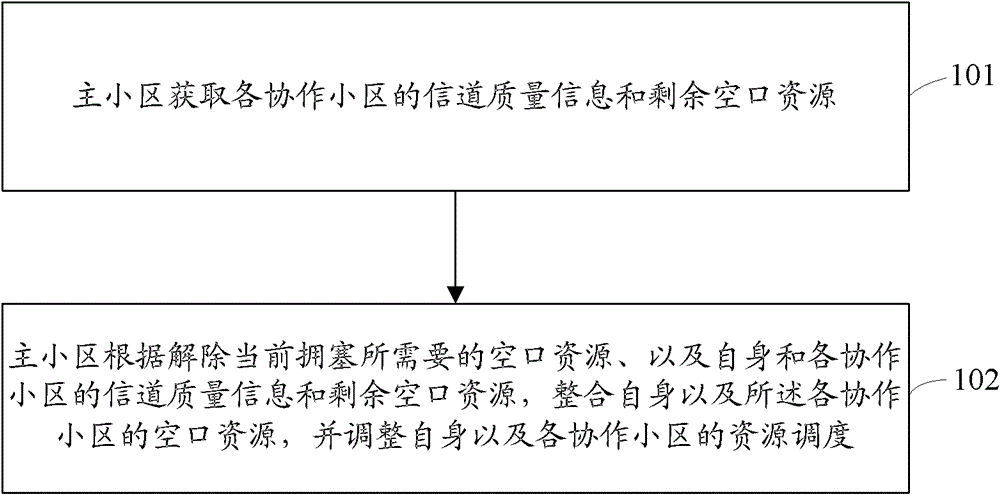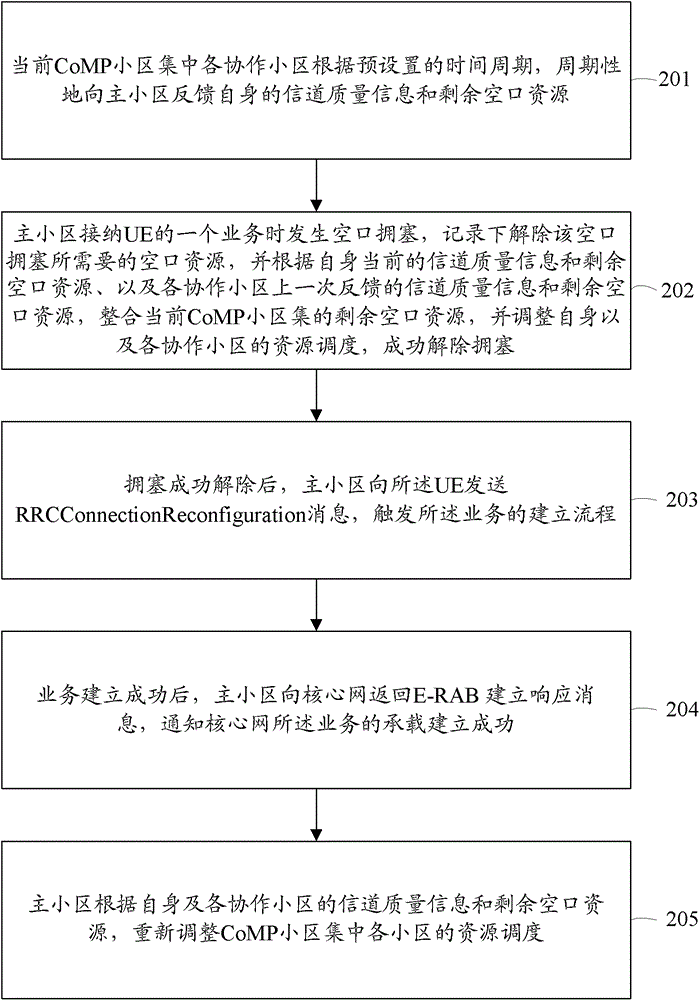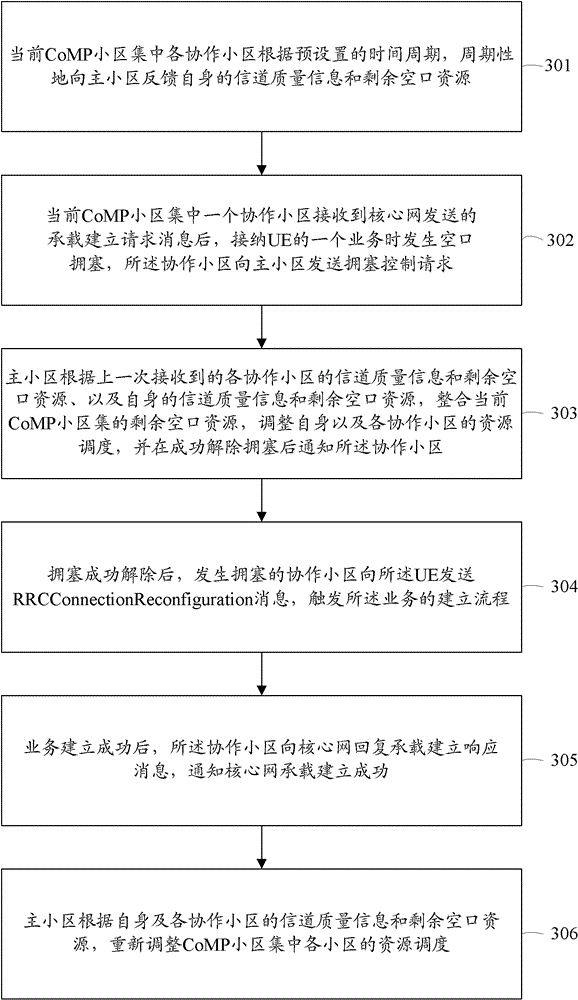Cooperative multi-point (CoMP)-based control method and system for congestion of air interfaces
A technology of congestion control and air interface resources, which is applied in the field of air interface congestion control based on multi-point coordination, can solve problems such as lowering UE service QoS, lowering service quality, and business teardown, so as to improve the overall throughput and simplify the congestion control process Effect
- Summary
- Abstract
- Description
- Claims
- Application Information
AI Technical Summary
Problems solved by technology
Method used
Image
Examples
Embodiment 1
[0065] When air interface congestion occurs in the main cell in the current CoMP cell concentration, the specific implementation process of air interface congestion control is as follows: figure 2 As shown, the steps are as follows:
[0066] Step 201: Each cooperating cell in the current CoMP cell set periodically feeds back its own channel quality information and remaining air interface resources to the primary cell according to a preset time period.
[0067] Specifically, each coordinated cell feeds back channel quality information including its own CQI, SINR, and the number of remaining RBs to the primary cell.
[0068] Step 202: The main cell receives the E-UTRAN radio access bearer setup request (E-RAB SETUP REQUEST, E-UTRAN Radio Access Bearer SETUP REQUEST) message sent by the core network, triggers the main cell to accept a service of the UE, and then accepts the UE When air interface congestion occurs during a service, the main cell records the air interface resourc...
Embodiment 2
[0075] When air interface congestion occurs in any coordinated cell in the current CoMP cell set, the specific implementation process for air interface congestion control is as follows: image 3 As shown, the steps are as follows:
[0076] Step 301: exactly the same as step 201;
[0077]Step 302: After a cooperating cell in the current CoMP cell group receives the bearer establishment request message sent by the core network, air interface congestion occurs when accepting a service of the UE, and the cooperating cell sends a congestion control request to the primary cell, and the congestion control request includes There are air interface resources needed to relieve current congestion, channel quality information and remaining air interface resources of the coordinated cell.
[0078] Step 303: After receiving the congestion control request sent by the coordinated cell, the primary cell integrates the current CoMP according to the last received channel quality information and ...
Embodiment 3
[0084] Such as Figure 4 As shown, the flow of performing air interface congestion control on the LTE-A system may mainly include the following steps:
[0085] Step 401: The cell receives an E-UTRAN radio access bearer (E-RAB, E-UTRAN Radio Access Bearer) establishment request sent by a mobility management device (MME, Mobility Management Entity);
[0086] Step 402: Air interface congestion occurs when the cell establishes the E-RAB;
[0087] Step 403: verify whether the cell is a CoMP cell, if yes, continue to step 404, otherwise, directly access step 405;
[0088] Step 404: Perform CoMP-based congestion control processing on the cell. If the congestion is successfully resolved and E-RAB is successfully accepted, proceed to step 406; if the congestion is not successfully resolved, proceed to step 405;
[0089] Specifically, if the cell is a primary cell, the processing procedure in Embodiment 1 may be used for implementation, and if the cell is a coordinated cell, the proce...
PUM
 Login to View More
Login to View More Abstract
Description
Claims
Application Information
 Login to View More
Login to View More - R&D
- Intellectual Property
- Life Sciences
- Materials
- Tech Scout
- Unparalleled Data Quality
- Higher Quality Content
- 60% Fewer Hallucinations
Browse by: Latest US Patents, China's latest patents, Technical Efficacy Thesaurus, Application Domain, Technology Topic, Popular Technical Reports.
© 2025 PatSnap. All rights reserved.Legal|Privacy policy|Modern Slavery Act Transparency Statement|Sitemap|About US| Contact US: help@patsnap.com



